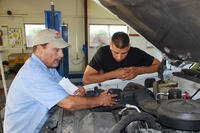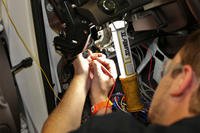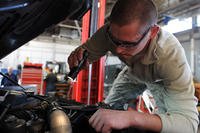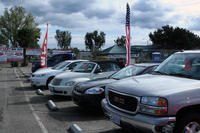Jeep built its name on tough, go-anywhere vehicles. Today’s off-road fans know Jeep for models like the Wrangler. Few remember a time when Jeep tried something different: a heavy-duty truck meant for soldiers on the move. This pickup truck packed more power and size than any Jeep before it. It served in harsh fields and on rough roads. It earned respect where lighter jeeps would break. Yet, it never got the fame it deserved. Behind its story lies a mystery worth unraveling. In this article, you will learn why Jeep built this truck, how it worked, and why it still matters to fans today.
The Kaiser Jeep M715 Was A Civilian Truck For The Army

The M715 began life as a plan to put a civilian truck into army service. In the late 1950s, the U.S. needed a new, light tactical truck. Army planners wanted a vehicle stronger than the old half-ton jeeps, yet easier to maintain than big 5-ton haulers. Kaiser Jeep answered the call by taking its commercial J-Series pickup and beefing it up for war zones. A rugged frame, heavy axles, and a more powerful engine turned the pickup into a military mover. Army crews could carry troops, tow gear, and haul supplies with one truck.
Kaiser Jeep showed off the prototype in 1966. Engineers added a reinforced front bumper with a pintle hook for towing. They fitted heavy-duty leaf springs to handle extra loads. The braking system gained larger drums to stop on rough ground. Underneath, a two-speed transfer case let drivers pick high or low range. That feature gave the truck better low-speed control when hauling heavy trailers. The truck’s wide tires improved traction in mud and sand.
Short-Lived But In Demand

By 1967, the M715 went into mass production. The army ordered over 14,000 units in the first batch. The new truck filled a gap between jeeps and larger cargo carriers. Crews found it simple to service in field shops. It shared many parts with civilian Jeeps, cutting down the need for special spares. That made it cheaper to run. Soldiers could swap axles, springs, or engine parts from stocks used by civilian dealers.
The M715 faced tough tests. In Korea and Vietnam, it carried water, rations, and ammo over rough trails. It climbed hills, crossed streams, and towed field guns. The heavy springs made the ride stiff, but that kept the truck from sagging under heavy loads. Soldiers learned to use its low-range gears to crawl up muddy slopes. They also added sand tracks and winches for extra support.
Heavy-Duty Tech And Off-The-Shelf Bits

The heart of the M715 was its powertrain. A 250-cubic-inch straight-six engine sat under a simple hood, delivering about 134 horsepower and 216 lb/ft of torque. It used a cast-iron block and head, plus three main bearings. The single-barrel carburetor kept upkeep easy. No fuel injection or complex electronics slowed down repairs. The engine’s torque curve suited hauling tasks more than speed. It reached peak torque at low revs, giving strong pull-away power.
Linked to the engine, the three-speed manual gearbox gave low, medium, and high gear. A floor-mounted lever let drivers click through gears quickly. Next to it sat a second lever for the transfer case. In high range, the truck cruised at decent road speeds. In low range, it crawled at about 3 mph, ideal for towing heavy trailers over rough ground. Drivers learned to shift between ranges on the fly.
Parts Shared With Civilian Jeeps

The truck’s frame used heavy-section channel beams. Engineers widened the rails to boost strength. They added cross-members under the cab and cargo bed. This braced the frame against torsion when the truck carried loads off-camber. The cargo bed itself used thick steel panels and a wooden floor. Tie-down points at each corner let crews secure loads with chains or straps.
Axles came straight from civilian Jeeps but with beefed-up shafts and heavier housings. The Dana 60 front axle and Dana 70 rear axle could cope with higher gross vehicle weight. They ran full-floating hubs in back, where the axle shaft did not carry vehicle weight. That improved durability when towing gun carriages or artillery pieces.
Brakes employed hydraulic drums on all four wheels. Each drum measured 12 inches across and ran dual leading shoes up front. That gave more braking force than the single-leading‐shoe design common on other trucks of the era. Still, fully loaded, the M715 needed long stops. Crews learned to downshift gears before descending steep slopes.
Kaiser Jeep M715 Variants

The M715 appeared in multiple forms to suit army needs. The basic cargo version carried up to 2,500 pounds on its bed. Soldiers loaded boxes, ammo cans, and water drums. The sides of the bed folded down for side loading. A tarpaulin kit let crews cover cargo from rain and dust.
A special “Gun Tractor” variant towed 105mm howitzers. It added a reinforced pintle hitch and heavier springs. Crews stowed gun trails inside the bed. They also fitted a small toolbox for artillery tools and parts. The gun tractor saw action in training units and in combat zones.
The ambulance version gained an enclosed, raised cab over the bed. Stretchers slid into racks inside. A rear door swung open for loading wounded soldiers. Windows and vents helped airflow. The ambulance used the same chassis but changed the body to meet medical needs.

Signal corps outfits received the M725, a communication truck based on the M715. The M725 carried radio gear, batteries, and antenna masts. Crews wired power take-offs to charge radios from the engine. The body had built-in cabinets for spare tubes, wires, and components. That variant formed the backbone of mobile comms units.
Other field‐adapted variants included a flatbed tanker for fuel and water, and a workshop truck fitted with a generator and tools. Engineers added a power winch on several models for self-recovery and field repairs. Crews often swapped bodies in the field, turning one chassis into a troop carrier or supply hauler as needed.
Modern Conversions: How Enthusiasts Transform Тhe M715 Today

These days, hobbyists around the world take the sturdy M715 platform and convert it into purpose-built rigs. Overland adventurers often swap in more efficient diesel engines, add high-clearance suspension kits, and fit rooftop tents. These mods turn the once-military hauler into a self-sufficient expedition vehicle capable of crossing deserts and fording streams.
Others opt for camper builds. They install custom aluminum bodies with slide-out kitchens, insulated pop-tops, and solar panels. Inside, compact living quarters include fold-down beds, water tanks, and small stoves. The M715’s heavy frame handles the extra weight with ease, making it a popular choice for weekend warriors who crave remote escapes.
Some fans restore M715s to show-truck condition. They strip the chassis down, sandblast each component, and repaint in originals olive drab or creative custom schemes. Chrome bumper kits, LED lighting upgrades, and modern brake systems give these classics a fresh yet authentic look. These restorations often appear at military vehicle shows, drawing crowds who admire the blend of history and craftsmanship.
Finally, a growing niche turns M715s into mobile businesses. You’ll see them reborn as coffee trucks, food stands, or even tiny field workshops. Builders fit modular service bodies or vans onto the truck bed, wiring in generators and tool cabinets. In each case, the M715’s simple mechanics and rugged build make conversions straightforward - and every truck tells a new story well beyond its original battlefield role.
The Truck That Replaced The Kaiser Jeep M715

By the early 1970s, the U.S. Army needed a next-generation light tactical truck. They wanted improved payload capacity, better ride comfort, and more modern components. The Army phased out the M715 in favor of the Dodge M880/M890 series.
Dodge’s M880/M890 trucks drew on the civilian Power Wagon design but featured heavy‐duty military upgrades. They carried a 1.25-ton payload, slightly more than the M715’s 1-ton rating, and offered stronger brakes, a sturdier frame, and a more refined cab. The new trucks came with power steering and improved suspension that smoothed out rough roads and reduced driver fatigue.
More Powerful V8 Engine
Under the hood, the M880/M890 used a 318-cubic-inch V8 gasoline engine. It delivered about 150 horsepower and 230 lb-ft of torque. The extra power meant these Dodge trucks handled steep grades and off-road conditions with less gear-hunting. A Loadflite 3-speed automatic transmission was standard, marking one of the first times a U.S. military light truck offered an auto gearbox from the factory. The M880 version also used a 2-speed transfer case. Cargo and ambulance bodies closely resembled those on the M715, but crews found the Dodge’s wider wheel track and longer wheelbase more stable under load.
Dodge delivered over 40,000 M880/M890 units between 1976 and 1977. The trucks served in Vietnam’s final years, then spread across Europe, Korea, and U.S. bases worldwide. Mechanics praised their simpler wiring harnesses and more accessible engine bays. Spare parts flowed through both military and civilian channels, cutting maintenance times in half compared to the M715.
This article originally appeared on HotCars and is republished here with permission.










